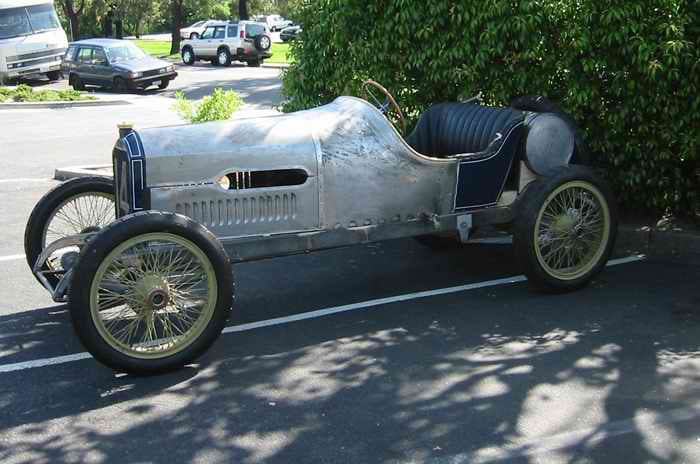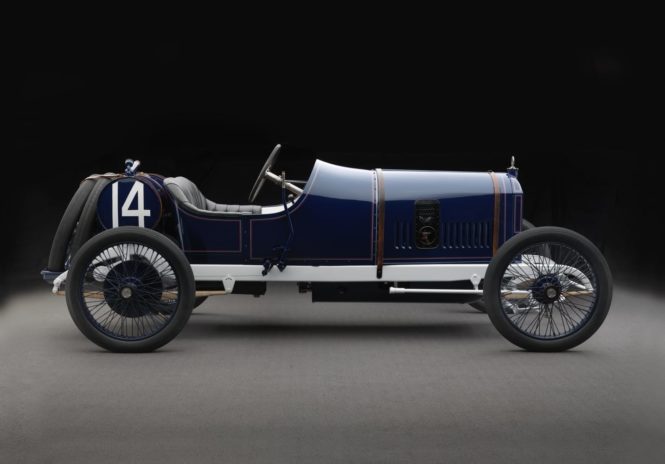Tech Specs
Four-cylinder in-line engine, double overhead camshafts, four valves per cylinder, 2980 cc (183 cubic inches), 90 hp at 2900 rpm.
Before/After
1913 Peugeot


About the 1913 Peugeot Type L3 Coupe de l’Auto Voiturette Racing Car
Until 1912 winning races was regarded as simply a matter of building bigger and bigger engines. Three race drivers – Georges Boillot, Jules Goux, Paolo Zuccarelli – and a brilliant engineer – Ernest Henry – changed that. They convinced Robert Peugeot that Henry’s ideas – among them twin camshafts operating four inclined valves per cylinder – could produce more power from less engine. “Les Charlatans,” scoffed Peugeot’s technical staff. The imposters, based in a “skunk works” in Paris, far from Peugeot’s factories in Eastern France, did the seemingly impossible. In 1912 a 7.6 liter Peugeot defeated a 15-liter Fiat in the French Grand Prix. The modern race car engine was born, to be fully realized the following year.
Peugeot race cars for 1913 were refined to 5.65 and 3.0 liters, for Grand Prix and voiturette racing respectively. Again, the French marque was victorious. Equally memorable was a race the following year which resulted not in victory but triumph. The event was the Indianapolis 500; the driver was Arthur Duray; the car, the one you see before you.
Described by Motor Age as occupying a place in Continental motor sport similar to Rube Waddell’s in American baseball, Duray was a likeable eccentric character fond of good times and a good joke. Certainly it was something of a jest to enter a 3.0-liter Peugeot independently – the car belonged to Jacques Menier of the French chocolate family – in a race in which Peugeot factory 5.65-liter cars were also entered, not to mention the 1913 French Grand Prix Delages with their potent 105-hp horizontal-valve engines.
“Baby” was the word used by reporters to describe Duray’s Peugeot during practice – until he broke the Indy lap record at 99.85 mph. In the race itself, Duray led for awhile but, his point made, remained content to hold a “safe second” rather than press for victory. The Delage that won boasted over twice the cubic inches of the 3.0-liter Peugeot. But what astonished American race car builders was that Duray’s engine was only six cubic inches larger than a Model T Ford’s. Within a couple of years, every successful Indy 500 race car had an engine carefully copied from the Peugeot’s.
Photos – Peter Harholdt






